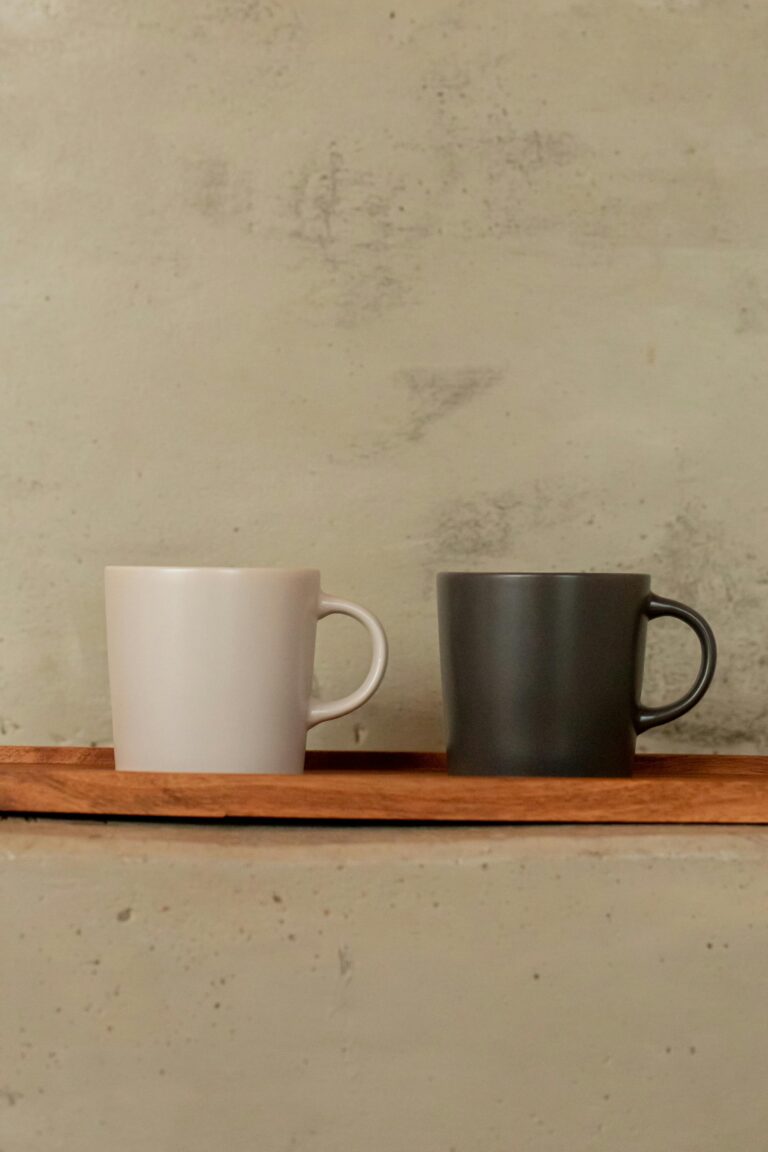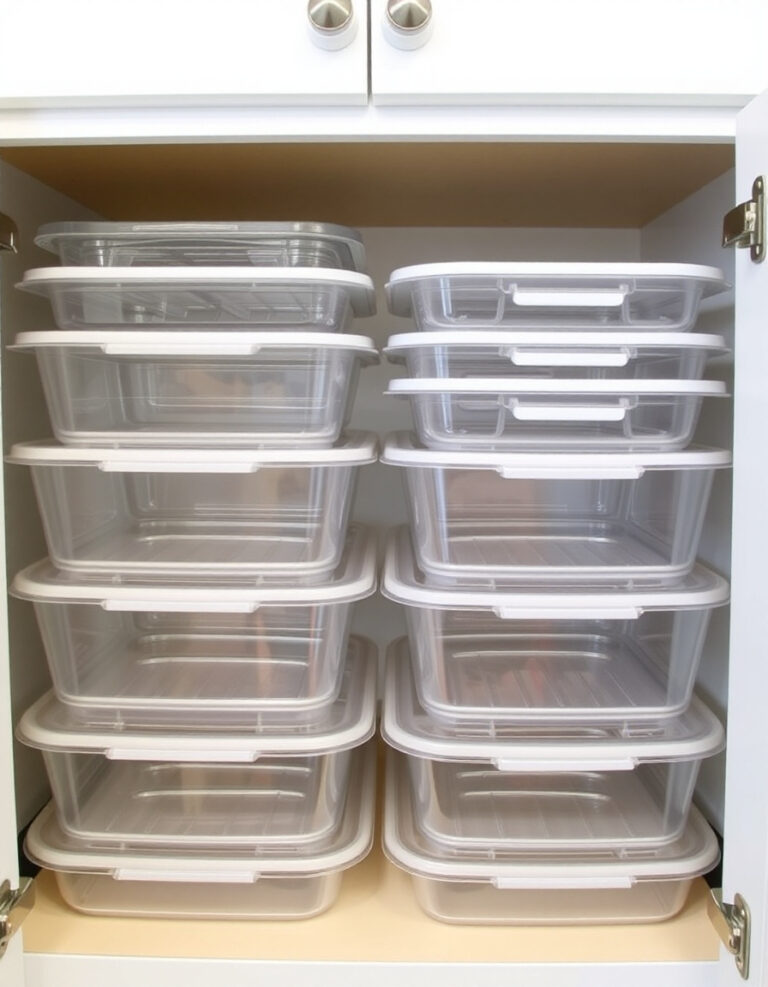Switching out sheets and blankets can feel like a wrestling match when everything’s jumbled together. Bedding organization systems can help you find what you need quickly and keep linens in better condition between uses. Here are eight practical approaches to storing your bed linens more efficiently.
Why Bedding Organization Systems Matter for Your Linen Closet

Organizing bed linens isn’t just about neatness. When bedding is stored properly, it tends to wrinkle less and air circulates better, which can help prevent that musty smell.
A good system also saves time during bed changes. Instead of pulling out three sets to find the right one, you can grab what you need in seconds.
1. Shelf Dividers Keep Bedding Organization Systems Structured and Separated
Shelf dividers create individual compartments for different sheet sets. They prevent stacks from toppling into each other when you pull something out.
Install adjustable dividers on existing shelves. Space them based on your folded bedding width so each set has its own slot.
This linen storage solution works particularly well for standard closet shelving. The dividers stay in place while keeping everything visible and contained.
2. Labeled Fabric Bins Simplify Bedding Storage Ideas for Quick Identification
Fabric bins with clear labels can eliminate guessing games. Designate one bin per bed size or per room, depending on your household setup.
Choose bins that fit your shelf dimensions. Collapsible options work well if you need to adjust storage seasonally.
Label the front and top so you can identify contents from multiple angles. This becomes especially helpful when bins are stacked.
3. Vacuum Storage Bags Maximize Vertical Space in Bedding Compartment Storage
Vacuum bags compress bulky comforters and seasonal blankets. They can reduce storage volume by up to 75%, freeing up significant closet space.
Store these flat under beds or on high shelves. Keep frequently used bedding in regular storage and reserve vacuum bags for off-season items.
The compression helps protect against dust and moisture. Just keep in mind that natural fibers like down may need time to re-fluff after being compressed.
4. Rolling Techniques Turn Sheet Organization Into Compact Bundles
Rolling sheets instead of folding creates tighter, more stable bundles. This method works especially well for fitted sheets, which can be tricky to fold neatly.
Roll each complete set together and secure with a ribbon or the pillowcase. The cylindrical shape makes sets easy to stack or store in drawers.
This approach to organize bed linens also prevents the deep creases that come from traditional folding. Rolled bundles stack more securely than folded piles.
5. Over-Door Organizers Add Bedroom Linen Organization Without New Furniture
Over-door organizers utilize often-wasted space. The pockets can hold sheet sets, pillowcases, or smaller blankets depending on pocket depth.
Hang one on a closet door or bedroom door. Clear pockets let you see contents at a glance, while fabric pockets can match your décor.
This solution works well for guest room bedding that doesn’t need daily access. The vertical arrangement keeps items separated without taking up shelf or floor space.
6. Drawer Dividers Create Custom Bedding Storage Ideas Within Existing Furniture
If you store linens in dressers or built-in drawers, dividers can help maintain order. They prevent sets from mixing together when drawers open and close.
Adjustable dividers let you customize compartment sizes. Create sections for pillowcases, flat sheets, and fitted sheets within the same drawer.
Group complete sets in one compartment to make bed changes faster. The contained spaces can help fabrics stay neater between uses.
7. Pillowcase Storage Method Keeps Bedding Organization Systems Self-Contained
This popular technique stores entire sheet sets inside one of their own pillowcases. Fold the flat sheet, fitted sheet, and extra pillowcase, then tuck everything into the remaining pillowcase.
The self-contained bundle keeps sets together and creates a neat rectangular package. Stack these on shelves or in bins for easy access.
Each bundle becomes a grab-and-go unit for bed changes. You won’t need to hunt through separate piles for matching pieces.
8. Closet Bedding Storage with Tension Rods Adds Flexible Shelving Layers
Tension rods installed between shelf supports can create additional storage levels. Drape flat sheets or lightweight blankets over the rods to keep them accessible and wrinkle-free.
This method works particularly well for items you rotate frequently. The hanging storage allows air circulation while keeping linens visible.
Position rods at different heights to accommodate various bedding thicknesses. The adjustable nature means you can reconfigure as your storage needs change.
Quick Tips for Maintaining Your Linen Storage Solutions
Once you’ve established a system, a few habits can help maintain organization. Fold or roll bedding immediately after drying to minimize wrinkles and make storage easier.
Rotate your sheet sets regularly. This can help linens wear more evenly and prevents some sets from sitting unused for months.
Consider a seasonal switch where you move heavy winter bedding to less accessible storage during warmer months. This keeps everyday items within easy reach.
Frequently Asked Questions About Bedding Organization Systems
How do you organize bedding in a small closet?
Focus on vertical storage solutions like shelf dividers or stacking bins. The pillowcase storage method can help maximize space since each set becomes a compact bundle.
Use the top shelf for seasonal items you access less often. Keep everyday bedding at eye level for convenient access.
What is the best way to store extra bed sheets?
Store complete sets together using the pillowcase method or labeled bins. This approach to organize bed linens prevents mix-ups and makes bed changes faster.
Keep sets upright in divided sections rather than stacked flat. The vertical orientation can help you see all options at once.
How often should you rotate bed linens?
Rotating every week or two can help extend the life of your sheets. Having three to four sets per bed allows for regular rotation while some are in the wash.
This practice distributes wear more evenly. It also means you’re less likely to overwash any single set.
Where should spare bedding be stored?
Linen closets work well, but bedroom closets, under-bed storage, or even dresser drawers can be effective with proper organization. Choose locations based on how frequently you access different items.
Guest bedding might go in a hall closet, while everyday sheets can stay in the bedroom. Climate-controlled areas tend to be better for fabric storage than damp basements or hot attics.
Can you store bedding in plastic containers?
You can use plastic containers for linen storage solutions, but choose ones with some ventilation or open them periodically. Fabrics need air circulation to prevent moisture buildup and musty odors.
Clear plastic bins make contents easy to identify. Just avoid storing in humid areas where condensation might form inside sealed containers.
What’s the easiest bedding storage idea for kids’ rooms?
Simple labeled bins or baskets can work well for children. Rolling techniques might be easier than precise folding for younger kids learning to help with bed changes.
How do you prevent sheets from getting musty in storage?
Ensure bedding is completely dry before storing. Good air circulation in your storage area can help prevent moisture buildup.
Avoid overpacking shelves or bins. Some space between items allows air to move through, which helps keep linens fresh.
Making Bedding Organization Work for Your Space
Finding the right bedding organization systems can streamline your routine and help linens stay in better condition. Start with one or two methods that fit your current storage setup.
The goal is creating a system that works with your habits, not against them. Pick approaches that feel sustainable for your household, and bed changes might become a little less chaotic.



